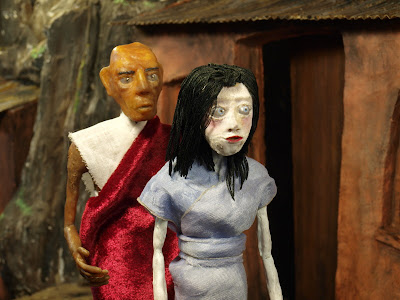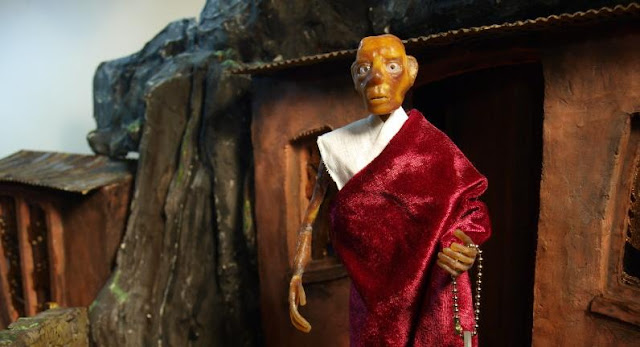I've said before that animation is like acting through puppets and that is never more true than in the close shot. I find therefore that it helps to have the camera close to the puppet when I'm taking them.
 |
| Now what is Tom Hardy thinking? |
It's only human nature: his audience is up close in front of him so, psychologically, he doesn't feel like he has to project his acting to the back stalls but can express a complex thought with a tiny twitch of his eyelid.
Just so in animation, with the camera so close that it almost gets in the way of your working, you are constantly aware that the performance of subtle movements in the eyes or of a swaying strand of hair needs only to travel a couple of inches to it's audience, so you instinctively make those micro-millimetre changes necessary from frame to frame.
Then there's the walk cycles. One still to go on that front, damn, but they're hard to do! This recent slate with the character walking reverently from background to foreground used up all of the rigging tools that I had, switching between screw-downs from under the stage - only necessary while his feet are in view, then moving on to a clamp attached to the rigging point on the puppet's pelvis and when the boom arm from that could no longer be hidden by his robe, a vertical pole and spreader and finally my personal favourite, the "bobbing up and down on a stick" device as he comes into focus.
Something that didn't occur to me until this is that all that rigging, though invisible to the camera, casts shadows on the set. Shadows that you don't notice until they mysteriously disappear as you change the rig type. Just to the left of frame is a collection of black flags creating replacement shadows where the big black rigging boom used to be. It's been a trial but it's come out a lovely shot. It's too near the end of the film to show it to you in full here so, no.


















.jpg)








